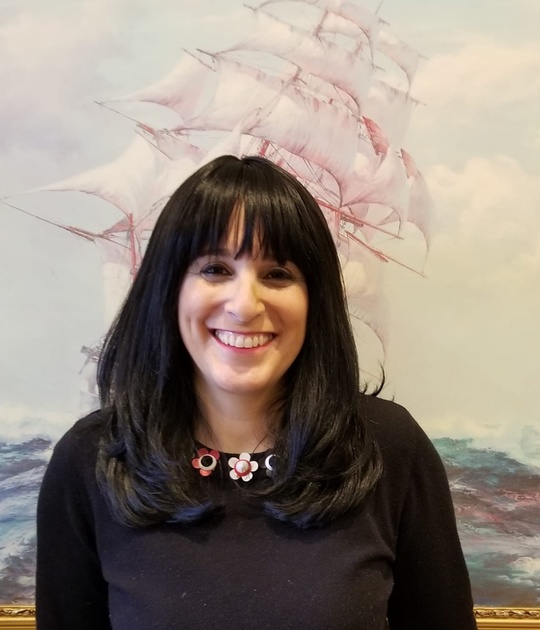
Okay, so you want to know what's with the hug.
The hug?
Yep, the hug.
The hug most clients want from their therapists whether or not they dare ask for it.
Oh, that hug.
It's a taboo subject, you know. It's not a something I would ask another therapist. Like, “Do you hug your clients?” because we are not supposed to be hugging clients. That's all in the literature. Go on line and try to find stuff on therapist hugging clients. It's like trying to find the winning lottery ticket number. It's that hard to find a straight answer.
If any of my clients are reading this (and yes, I know quite a few of you read my columns, so know that I am talking straight to you!), they probably are really curious about my answer. “So, does Mindy hug her clients? Hey, has somebody been getting hugs and it wasn't me?”
As an object relations/attachment therapist, in which I believe that the relationship between client and therapist is crucial to therapy in order to repair damage done in primary relationships that are interfering in present functioning, this hugging question becomes very important. It's the great, pink elephant in the therapy room and it's just a matter of time before it surfaces.
Before I go further, I am going to explain a very important word in therapy-language. It's called transference. In simple English, it is when people transfer their feelings—and reactions—onto people in their present life that really have their roots in prior relationships and often make no sense in the present situation. Let me explain because we do it all the time so you will catch on pretty quickly.
Let's say you are working at a job as a secretary. And a new workmate says in a friendly manner, “Do you mind bringing me back a hot chocolate when you go out for your lunch break?” and suddenly you are gripped with this very nasty feeling and you think to yourself, “Who does she think she is asking me to get her stuff that she can do by herself? I hate being used and I bet she doesn't pay me back and I'm not going to act petty by asking her for the dollar! She has such nerve asking me!”
In all probability, the workmate is a perfectly ordinary person—and so are you!—who has no ulterior motives to use you, to steal your money or time; and will very gladly return the favor for you a different time. However, what has kicked in here is transference! You may have had an elementary school friend, neighbor, cousin, or older sister with whom you had such relationship. Someone who used to ask you for favors and never repay them, take advantage of you, or make you feel used. And now, when your workmate innocently enacted a similar behavior, it triggered a response based on old relationships!
To bring this closer to home, we do this all the time with our spouses and children without realizing it. We snap at our spouses when he offers to bathe the baby, and we accuse him of thinking we aren't good mothers, when in reality, he is only trying to help and we have transferred onto him a pattern of an old relationship in which our fathers, or teachers, or older brothers, have conveyed that message in our childhood with a similar behavior. Like when our older brother said, “Let me hang up the painting,” and implicit in his words was that you were a shlemazel who couldn't get anything done, or done right.
In steps the therapist. And after the honeymoon period of therapy, the transference kicks in big time. If the therapist didn't greet you with her usual warmth, you transfer feelings of anger at your mother over to her and accuse her of not caring. If she must cancel an appointment you accuse her (either verbally or in your heart) of not being reliable, consistent, or honest, reminiscent of your father, your teacher, or your counselor who hurt you.
And for some clients, intense feeling of love towards the therapist often is another piece of the transference. It is usually the painful love the client feels for his parent with whom he has a complicated relationship.
These loving feelings are so strong, that they don't even make sense in any other context other than the transference. This transference is important, and part of the healing, make no mistake. But within this therapeutic setting, there are strong feelings of wanting to be held by the therapist, rocked, and hugged.
And when these feeling arise out of the transference, it would often be harmful for the therapy, even unethical, for a therapist to hug a client.
Gila Manelson, in her beautiful book, The Magic Touch, writes about the power of physical touch that it can only come after a true emotional relationship; or else it will create a glue that really is binding two unrelated objects together (as in two people who are really not connected and therefore should not marry). So too, a hug would create a bond for the client that has nothing to do with the therapist and put a wall, a cocoon that would block work on what the real relationship issues are in the client's world that needs mending.
While a therapist-client relationship is most assuredly a real relationship, the real part of it is not the intense loving feelings a client has for the therapist that demands a hug or to be held.
So no, as a rule, I do not hug clients.
It would not be appropriate for a therapist to initiate a hug. But it would be okay if a client asks for a hug as a way of saying goodbye and thank you at the termination of a successful therapy. And it would be okay if a client asks for a hug when some terrible—or wonderful—thing occurs that is out of the therapy structure (she loses her grandmother, she gets engaged). And would be okay to touch a client if a client is elderly and needs help putting on a coat. It may be okay when the hug is not associated with the transference but takes place in the real relationship of the therapeutic environment.
It doesn't mean a therapist will hug if a client asks under those circumstances because therapists still have their own personal boundaries concerning space and touch; but rather that touch may be considered appropriate.
Here's the stuff I have in my office that can symbolically give my clients the touch and hug and holding they crave.
I have heart stickers they can take, or I can be asked to give. I have colored stones that say things on them like courage, one day at a time, hope, and consider yourself hugged; and these stones fit in the palm of the hand comfortably all through the session and then returned to the little glass dish when the session is over, to be re-used a different time, or by a different client. I have a red blanket that can be drawn around the shoulders in a tight embrace, and I have pillows that can be squeezed or hugged.
And sometimes, when my client asks for a hug, I will say, “Let this room hold you.”
Note: This article was originally published in Binah Magazine, in my bi-weekly column Therapy: a sneak peek inside
BIGGER NOTE: STAY TUNED FOR NEWS OF MY UPCOMING BOOK ABOUT THERAPY!
Look me up on LINKEDIN https://www.linkedin.com/in/mindy-blumenfeld-a8067583
Check out my book THERAPY SHMERAPY, available in bookstores and through Amazon
Browse through my previously published articles on my former blog Therapy Thinks and Thoughts at frumtherapist.com/profile/MindyBlumenfeldLCSW
Read current articles in my bi-weekly column THERAPY: A SNEAK PEEK INSIDE in Binah Magazine, available on newsstands every Monday.
 Previous
Previous

